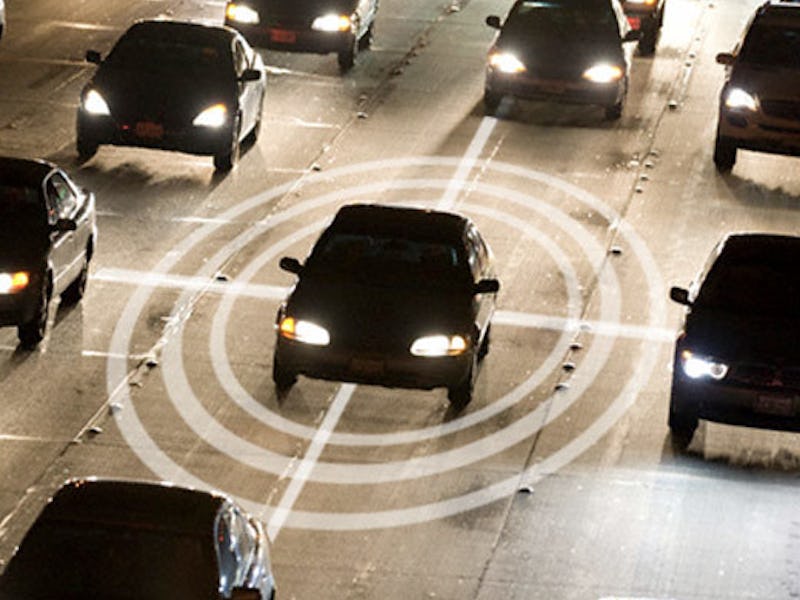Nissan Is Rolling Out Cars That Talk to Each Other
The cars are outfitted with Savari's V2X technology and can also communicate with smart roadway intersections.

Uber, Tesla, and Google are all investing billions of dollars in the future of self-driving cars, but Nissan is betting a car communication technology company named Savari can make driving safer and simpler — today.
Nissan cars in Sunnyvale, California, this week are beginning to roll through roads outfitted with Savari’s Vehicle-to-Vehicle (V2V) technology, which enables cars to speak with each other, and Vehicle-to-Infrastructure (V2I) technology, which lets the cars communicate with roadside hardware that shoots out info in real time.
The pilot test area for these V2V/V2I-capable cars, V2X cars for short, spans just 4.63 square miles of the city, where Nissan houses one of its research facilities, and will test cars traveling through three public intersections outfitted with information-beaming units. The V2I equipment planted roadside collects and relays things like traffic flow details and sends it to the cars, such that they can better navigate, avoid collisions, and receive weather warnings.
Live traffic info from highway beacons sent to cars sounds helpful, but why is car-to-car communication seen as such a boon for safety?
“Imagine that [cars] could communicate highly accurate information such as speed, acceleration, steering angle, existence of a trailer, failure of a headlight or brake light, etc – to offer near-instantaneous feedback to enable evasive or preventive action,” Savari writes on its website, explaining the vision for V2V technology. “Such information would take the guesswork out of today’s existing sensors and systems and provide highly reliable, real-time situational awareness based on which smart decisions can be taken.”
Savari's MobiWave on-board unit helps communicate with other cars.
And though self-driving cars and their potential safety benefits are the talk of highway science these days, Savari claims its technology can provide much of the same safety without taking control completely away from the driver.
V2X, in some form or another, has been around for nearly a decade, but it’s never taken off commercially due in large part to the cost. The University of Michigan turned the city of Ann Arbor into its testing grounds for this technology with the backing of the U.S. Department of Transportation, but was never able to bring it to scale elsewhere.
Rules governing V2X technology are still a little murky, but one analyst speaking to MIT is saying the DOT could be looking to announce new rules in the fourth quarter of this year. Stay tuned!
The streetWave unit will communicate traffic information to cars.